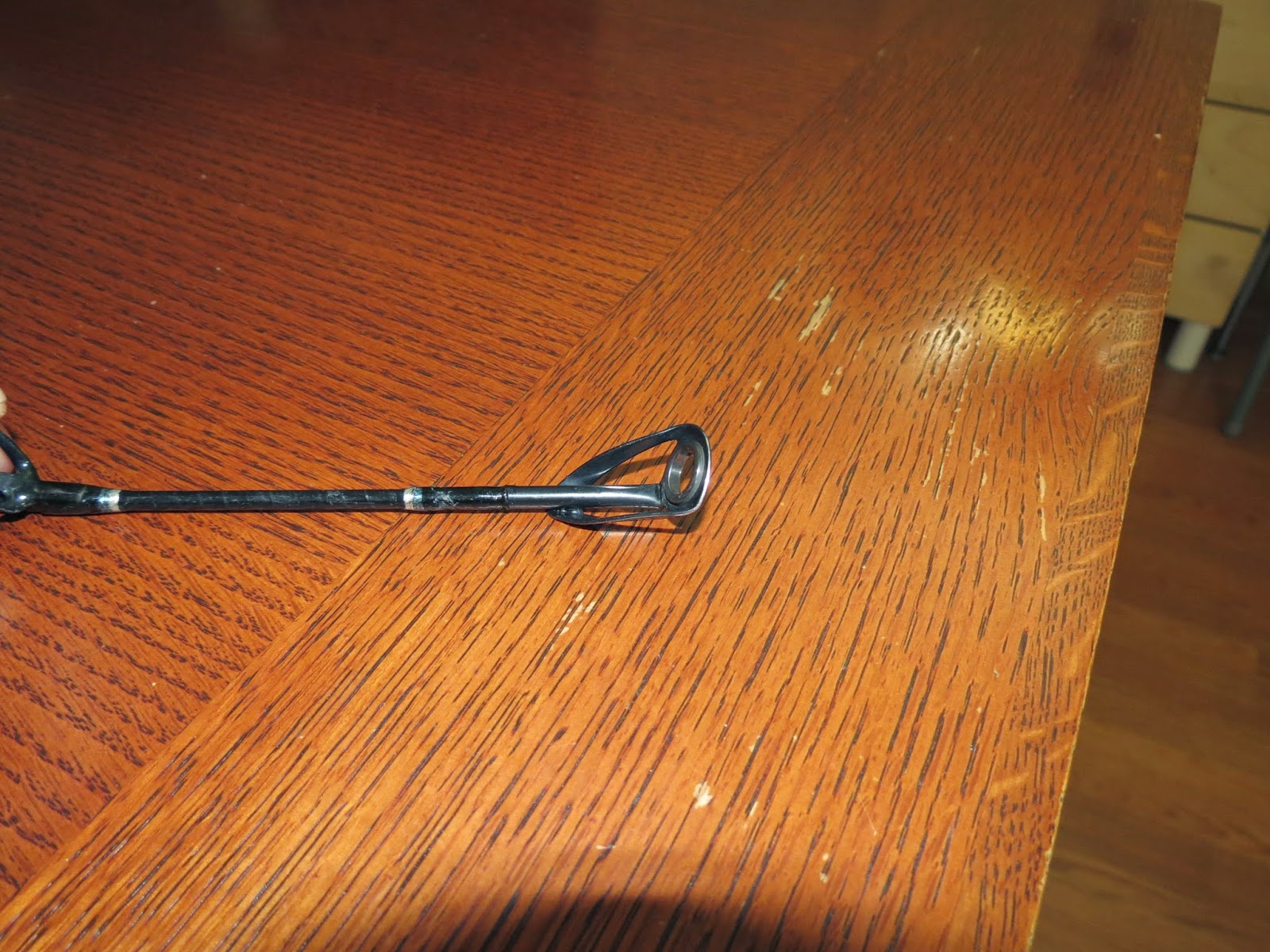During the open season it can be difficult to find the time to do more than a good rinse with fresh water after each use, at least for me. That is why once the season closes I like to do a thorough tear down and cleaning of my gear. Here is the technique that I use and that works for me.
I do one rod and reel setup at a time, from start to finish. This helps me keep components organized and separate from each other.
Step 1. Remove the reel from the rod and set aside.
Step 2. Give the entire rod a good cleaning with warm, soapy water and a gentle scrub brush. Cleaning the rod first, removes built up grime and allows you to see problems during your inspection.
Step 3. Do a thorough inspection of the rod starting with the grips and working your way to the tip.
Butt Cap - This is the cap at the very bottom of the rod. It protects the butt of the rod and should be
securely in place.
EVA Foam grips - Modern EVA is very durable and requires very little maintenance. I generally just give it a good wash down with warm soapy water and inspect for defects that could cause problems such as looseness on the rod blank, which is rare.
Cork grips - I love the feel of cork and it is a time tested material but it does pick up more contaminants than EVA and is subject to more wear and tear. Again, I check to ensure the grip is secure to the rod blank and that there are no cracks or major defects. Then I wash the grip with warm soapy water and a gentle brush. If you find there is grime that you can not remove with this method try using a small amount of denatured alcohol.
Reel Seat - Your reel seat keeps your reel solidly in place. If it breaks you are out of service. That is why it is important not to over tighten your seats. I begin by looking at the threads for signs of damage such as flattening or cuts in the threads. When cleaning and inspecting the threads be sure to move the hood all the way up and down to get to all of the threads. I then check the hoods for cracks and damage that may affect their ability to secure the reel. I also make sure the seat is securely attached to the rod blank. You do not want your reel seat coming loose and moving.
Guides, Tip Top, and Wraps - Continue to work your way up the rod checking each of the guides and guide wraps as you go. When inspecting the guides look for physical damage such as loose, bent, or broken
guides. Then check the guide rings (the inside circle where the line runs) for damage such as cracks, grooves, or nicks in the coating that can damage or cut your fishing line. I like to use a cotton swab and run it around the guide rings to see if the cotton snags on anything. Any defect that the cotton snags on can potentially damage your line causing it to fail at the wrong time. Many of these defects can be removed with a light sanding with a fine sandpaper or steel wool, just don't over do it. As you inspect the guides check the guide wraps and finish on the rod for signs of damage such as frayed or loose threads and cracks in the finish coat.
Undamaged guide frame and wraps
Undamaged guide ring
Crushed guide frame in need of repair
Tip top repairs are fairly simple. Fuji and other companies sale repair kits that come with an assortment of tip sizes and tip top adhesive. If the old tip top is loose but still attached using some heat from a heat gun or hair dryer to soften it enough to remove the old top. Do not use direct flame or hold a heat gun in one spot for too long as you can damage the rod. Once the old tip top is removed, clean the tip of the rod as best as you can and install the new tip top per the kits instructions. For other repairs such as broken or loose guides, broken or loose reel seats, or loose grips you may need to take the rod to a rod builder for repair or scour YouTube for "How-to's" on repairing it yourself.
Undamaged tip top
Rod tip with the tip top removed
Taking care of your equipment doesn't take a lot of time and will help to ensure you don't lose that next personal best fish due to lack of maintenance. Now its time for me to go tackle that reel.
Before the season closes, get out there and fish!
Cheers, Tebbs











No comments:
Post a Comment